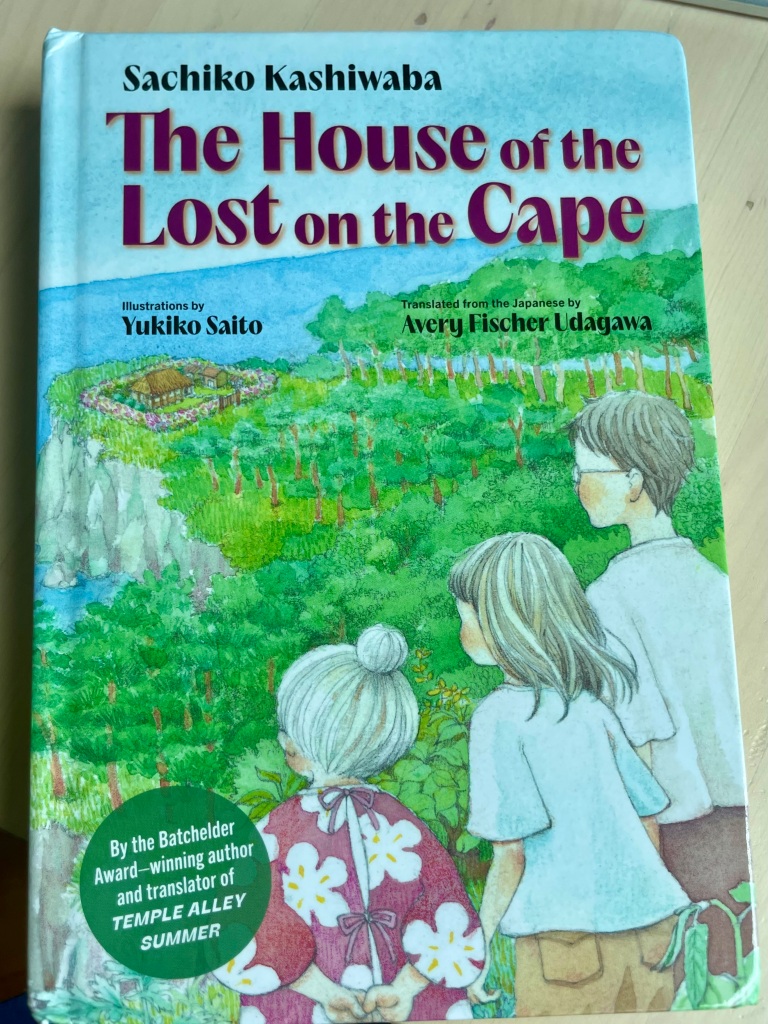By Maureen Tai, 21 September 2023
“So that’s the question, I guess, for you and for me and for all of us trying to do this sacred task of telling stories for the young: How do we tell the truth and make that truth bearable? – Kate DiCamillo

The Tōhoku earthquake and tsunami of 2011 continue to cast long shadows. The middle grade, realistic/fantasy novel The House of the Lost on the Cape (ages 10+) opens with this horrific event, drawing readers into the fates of the three main characters. Kiwa, Yurie and Moeka are brought together by circumstance, only to be bound together by a common purpose and similar needs: the need to love, to be loved and to be part of a community.
Kiwa Yamana, or Obāchan (Granny), is the central figure; a kind and spritely elderly lady bound for a nursing home in Kitsunezaki (Fox’s Point) but who, due to the tsunami, ends up sheltering in a gymnasium. Yurie Sano is a childless wife escaping an abusive marriage who sees a young speechless girl on a train and rather impulsively, decides to follow her when she alights. The girl, Moeka, is being escorted to her uncle’s house, but disaster strikes, and both Yurie and Moeka find themselves in the same gymnasium as Obāchan. In an unusual turn of events, Obāchan ends up informally adopting Yurie (now with a newly assumed name of Yui) as her daughter-in-law and Moeka (now known as Hiyori) as her granddaughter. The three move to an old, thatched house at the tip of Fox Cub Cape. According to Obāchan, their new house is very much like a mayoiga (lost house), a sentient being with a personality who brings good fortune to all those who find it. As Yui and Moeka slowly adjust to their new roles and their new lives, they discover that there is more to Obāchan than meets the eye, especially after they are introduced to Obāchan’s many colourful yōkai friends. These deities and supernatural spirits from Japanese folklore – kappa, Jizō and zashiki warashi, among others – are a charming, friendly bunch, and they come without hesitation to Obāchan, Yui and Hiyori’s aid when the three must stand together against an ancient enemy.
Despite being, at its core, an engrossing and imaginative Good-versus-Evil fantasy story, the reality of the earthquake and the tsunami’s aftermath are never downplayed. Yui’s fright as she witnesses houses being swept away. Hiyori’s overwhelming feelings of grief, despair and loneliness. The severity of the physical destruction. The devastating loss of lives. All these aspects are masterfully weaved into the narrative, described in Kashiwaba’s unadorned, thoughtful and honest writing, the truth no less poignant, but to borrow Kate DiCamillo’s words, made bearable for young readers. Therein lies the skill of both writer and translator, conveying the true heart of the novel, with its beat that stays with us long after the last page is turned.
For ages 10 and up.

One thought on “The House of the Lost on the Cape by Sachiko Kashiwaba, translated by Avery Fischer Udagawa & illustrated by Yukiko Saito”